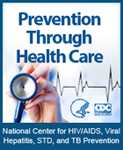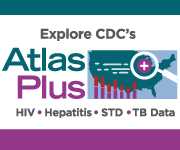NBHAAD Media Summaries
Resources
HIV Testing and Service Delivery among African Americans — 61 Health Department Jurisdictions, United States, 2013
African Americans accounted for nearly half of people reached by CDC-funded HIV testing efforts and more than half of all new HIV diagnoses in 2013, according to a new analysis of CDC-funded testing efforts in 61 U.S. areas. Data underscore the disproportionate HIV burden among African American men who have sex with men (MSM). To assess the impact of CDC-funded HIV testing and service delivery efforts, researchers examined data submitted by 61 health department jurisdictions and 151 directly funded community-based organizations through the National HIV Prevention Program Monitoring and Evaluation system. In 2013, African Americans accounted for 45% of CDC-funded testing events (defined as one or more HIV tests performed to determine a person’s status), the largest proportion of any racial/ethnic group. Additionally, African Americans accounted for 54.9% of all new diagnoses, and among African Americans, MSM accounted for 37.3% of new diagnoses. Data indicate that gaps in HIV service delivery persist after diagnosis. For instance, just over half (53.6%) of newly diagnosed African Americans were referred to HIV prevention services. Despite progress in testing, 15% of African Americans with HIV are unaware of their infection and many who have been diagnosed are not receiving care and treatment. Authors call for continued efforts to expand HIV testing efforts, particularly among hard-hit populations, like MSM, and to increase linkage to care and behavioral prevention activities to help those with HIV improve their health and prevent transmission to their partners.
Mortality among Adult and Adolescent Black/African Americans Diagnosed with HIV – United States, 2008-2012
According to a new CDC analysis, death rates among African Americans with HIV declined 28% from 2008 to 2012 – more than among any other race/ethnicity. While disparities between races/ethnicities have narrowed, death rates remain higher among African Americans with HIV than among those of other races/ethnicities. To better understand mortality among African Americans with HIV, researchers analyzed data from the National HIV Surveillance System for 2008 through 2012. Because immune suppression caused by HIV infection can result in fatal co-illnesses, authors estimated deaths due to all causes, rather than limiting their analysis to deaths resulting directly from HIV infection. This method allowed researchers to capture the fullest picture of mortality among African Americans with HIV. From 2008-2012, the death rate per 1,000 blacks living with HIV decreased 28%, more than the overall decline (22%) observed among all persons living with HIV and more than declines observed among other races/ethnicities (13% for whites and 25% for Hispanics). Despite these declines, the death rate per 1,000 blacks living with HIV in 2012 was 13% higher than the rate for whites and 47% higher than the rate for Hispanics. Authors conclude that these data support continued focus on efforts to improve HIV prevention and care outcomes among African Americans, who represent just 12% of the population, but more than a third of people living with HIV.
Media Contact
National Center for HIV/AIDS, Viral Hepatitis, STD, and TB Prevention
News Media Line - (404) 639-8895
NCHHSTPMediaTeam@cdc.gov
###
- Page last reviewed: February 6, 2015
- Page last updated: February 6, 2015
- Content source:


 ShareCompartir
ShareCompartir

